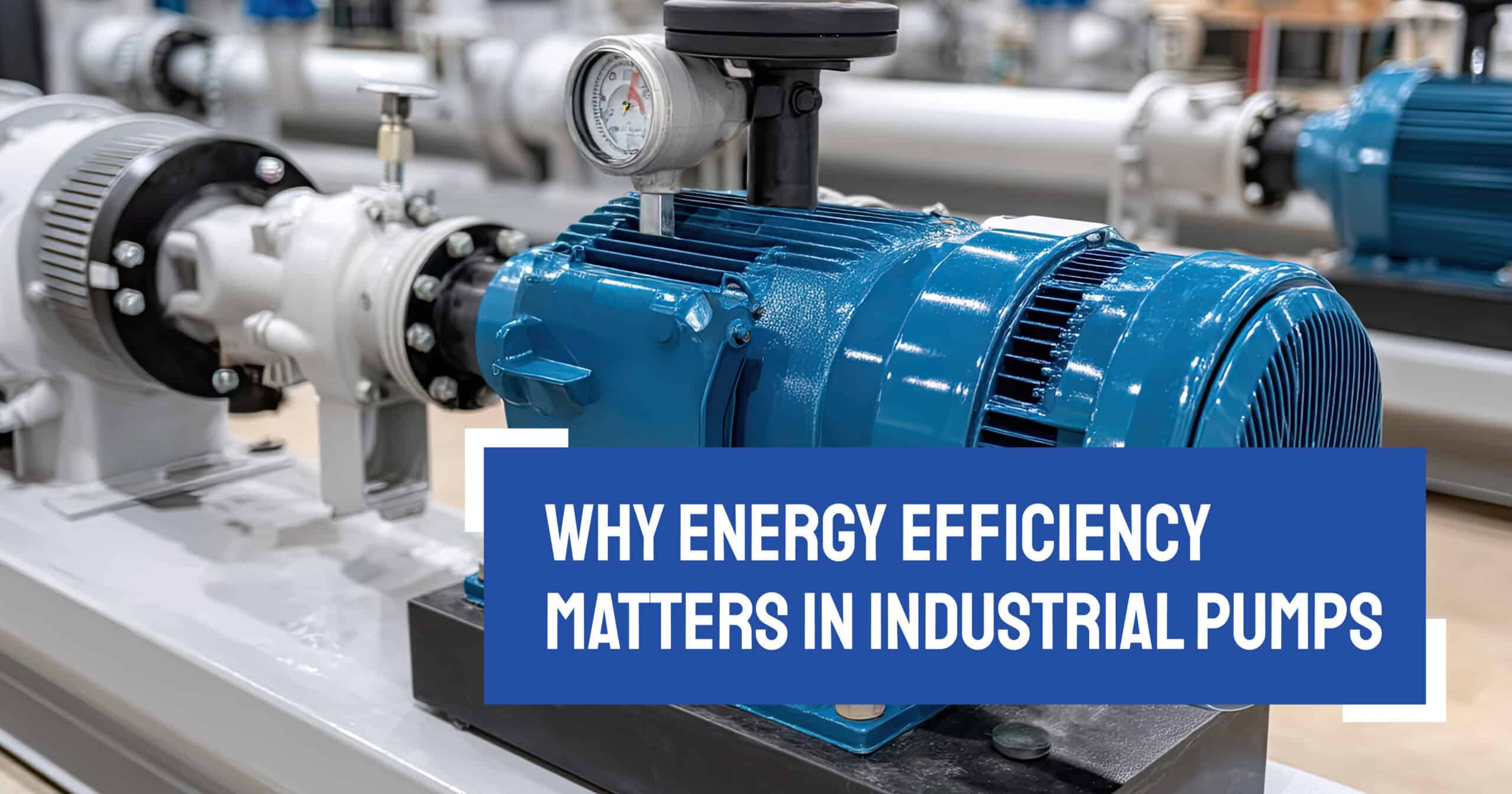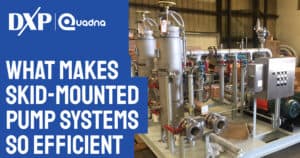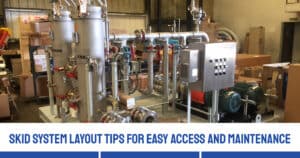In industrial facilities, pumps are often the largest single consumers of electricity—accounting for nearly 20 percent of global motor energy usage. With energy costs on the rise and environmental regulations tightening, improving pump efficiency is a necessity. At DXP Quadna, we optimize pump performance across a variety of applications to reduce operating costs and lower customers’ carbon footprints.
Here’s why energy efficiency matters—and how your facility can benefit from making smarter pump decisions.
The Hidden Cost of Inefficient Pumps
An inefficient pump wastes a significant amount of energy. This increases operating expenses, accelerates wear, and shortens equipment lifespan. Improperly sized or poorly maintained pumps often operate far from their best efficiency point (BEP), drawing more power than necessary while delivering suboptimal performance.
Even minor inefficiencies can add up. A pump that operates at 10 percent below its optimal efficiency can cost thousands more per year in wasted energy. For large facilities with multiple pumps, the financial impact can be significant.
Environmental and Regulatory Pressures
Energy efficiency is also key to sustainability goals. Reducing energy consumption lowers greenhouse gas emissions. It also helps organizations meet internal ESG targets and comply with environmental regulations.
Many industries are facing mounting pressure to document energy usage, reduce CO₂ emissions, and adopt greener technologies. Upgrading to energy-efficient pumps—and maintaining them properly—is one of the most effective ways to meet those expectations without compromising performance.
Strategies to Improve Pump Efficiency
Improving energy efficiency doesn’t always mean replacing your entire system. In fact, many upgrades and adjustments can yield quick returns with minimal downtime. Here are several proven strategies:
1. Right-Sizing Pumps
Oversized pumps are one of the most common sources of inefficiency. When a pump is too large for its application, it often throttles flow using control valves. This wastes energy. Selecting the correct size pump for the actual system demand is a critical first step.
2. Variable Frequency Drives (VFDs)
Installing VFDs allows pump speed to be adjusted based on real-time demand. This reduces energy consumption significantly—especially in systems with variable loads—while improving control and reducing mechanical stress.
3. Impeller Trimming
Adjusting the impeller diameter to better match system requirements can improve efficiency without the need for full pump replacement. This is particularly useful in systems where flow requirements have changed over time.
4. System Design Optimization
Sometimes the inefficiency lies not in the pump but in the system itself. For example, eliminating unnecessary bends, restrictions, or elevation changes in the piping system can reduce friction losses and improve overall efficiency.
5. Preventive and Predictive Maintenance
Regular maintenance—such as bearing lubrication, seal inspection, and vibration analysis—keeps pumps operating at peak efficiency. Early detection of wear or imbalance can prevent energy-wasting performance degradation.
Partner with Experts for Maximum Effect
At DXP Quadna, we specialize in helping industrial facilities identify and implement pump system improvements that deliver real energy and cost savings. From system audits and efficiency assessments to retrofit recommendations and custom engineering, we bring decades of expertise to every project.
Want to reduce your energy costs and environmental footprint? Contact DXP Quadna today to schedule an efficiency consultation and learn how we can assist you in attaining more from your pumps while using less.





